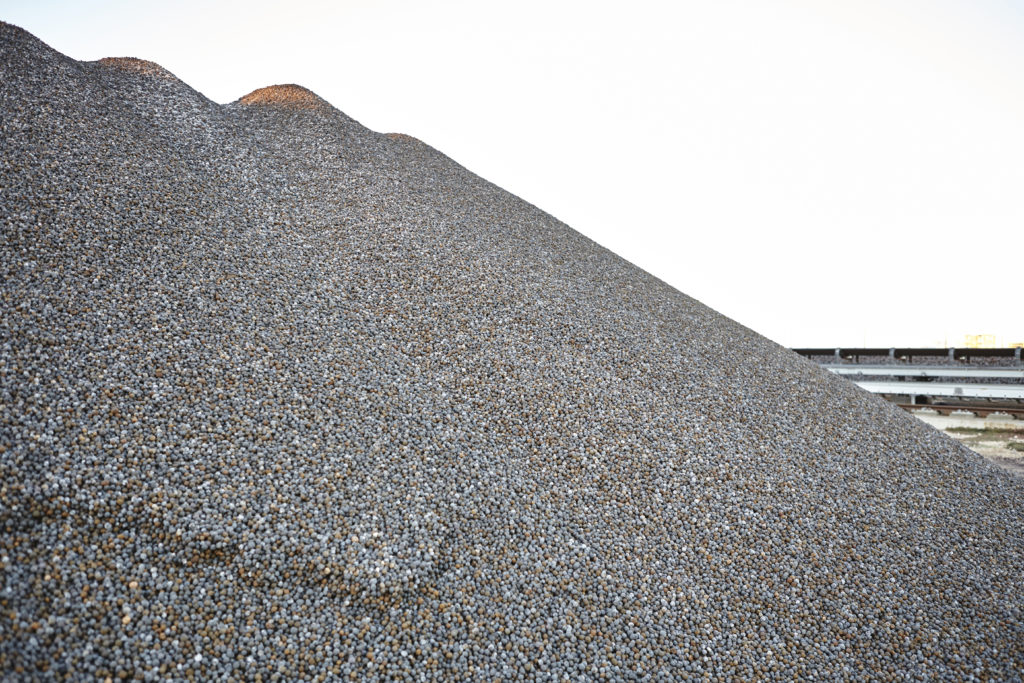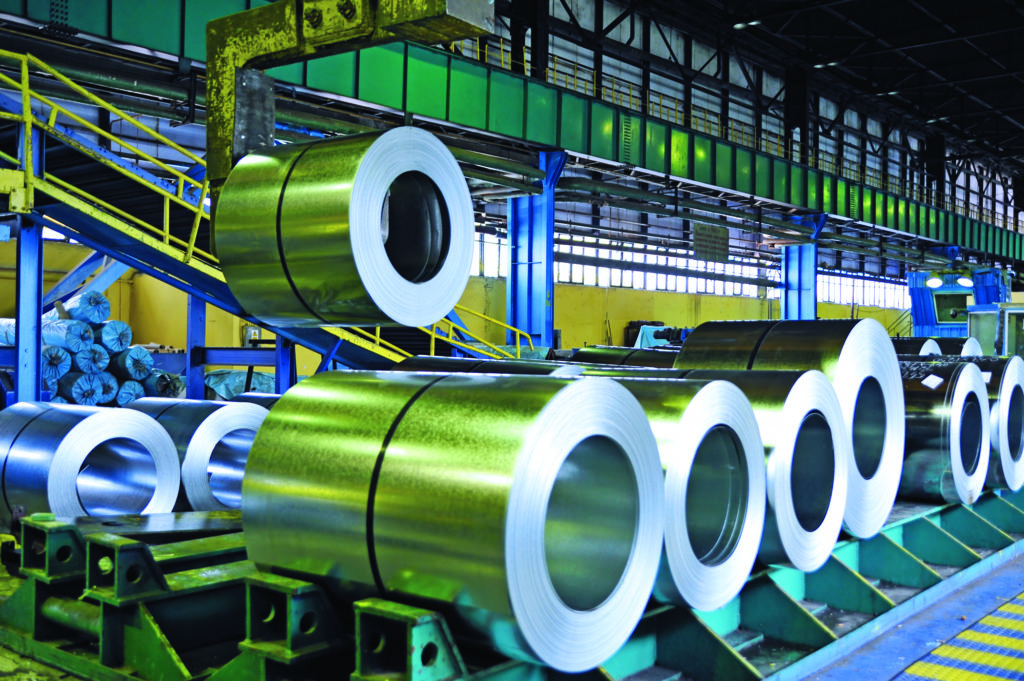Press Release
2014 World DRI Production tops 74.5 Million tons
June 24, 2015 Download
New technology and expansion continues despite difficult conditions
(Charlotte, NC – USA) The world’s direct reduction industry produced 74.55 million tons of DRI Products in 2014 according to data compiled by Midrex and audited by World Steel Dynamics. Production fell slightly from 2013 due to natural gas shortages and curtailments in India, and operational disruptions in other DRI producing regions as well general downturns in steel market conditions. DRI growth was evident in a number of nations including the USA and Bahrain. Plants based on MIDREX® Direct Reduction Technology accounted for 47.12 million tons, which once again led all technologies with 63.2 percent of the market total.
Output in 2014 was more than 70 percent greater than in 2000. Factors mentioned previously that have limited growth for the last decade persist but have been somewhat offset by demand for DRI products in “non-traditional” applications (i.e., blast furnaces and basic oxygen furnaces) and by the introduction of new reductant sources (i.e., gasified coal and coke oven gas). In Bahrain, production increased rapidly as the SULB plant, which had been commissioned the prior year, was ramped up toward full capacity. Nearby, the Gulf nations of Saudi Arabia and Qatar also saw significantly greater DRI production due to strong internal demand by their national economies. In the USA, the DRI plant owned by Nucor Steel began production, which marked the first time in five years that DRI was made in the US.

New national records for DRI output were established in six nations; Russia, Canada and four countries in the Gulf region, Bahrain, Iran, Qatar and Saudi Arabia. The concentration of growth in the Gulf area is a result of the many plants which have been started-up in the past few years. Although, it did not set a new record, it bears note that the South African DRI industry accomplished an increase of 10 percent over the previous year while national steel production dropped by more than eight percent.
Forces Affecting The Industry
Growth in North America and the Middle East can attributed to both product demand and availability of low cost natural gas. Various economic and political stresses did, however, stunt DRI production in other locations. Libya continued to suffer as rival groups struggled for control of the country and its resources. Egypt has yet to fully recover from political disruptions and Iran was restricted by international sanctions. India, too, experienced an insufficient supply of pellets after having been a major exporter of iron ore only a few years ago; however, the problem was compounded by a lack of natural gas at a favorable price. Venezuela continued to experience production difficulties due to infrastructure issues caused by the nationalization of the industry and other political and economic factors. Only 12 years ago Venezuela was the world’s pre-eminent manufacturer of direct reduced iron. Venezuelan output in 2014 was down to 1.7 million tons, less than 20 percent of the peak of nearly 9 million tons achieved in 2005. The decline in HBI exports was even more pronounced. ISSB reported only 212 thousand tons of DRI/HBI exports from Venezuela, a bit more than five percent of the 4 million tons shipped in 2006. Much of the problem derives from inability to sustain operation of the iron ore pellet supply chain, beginning with the mines and continuing through the pellet plants.
DRI Production Forecast
The outlook continues to be positive as demand increases in traditional and new markets, and as new and low cost energy sources become available for DRI production. Production numbers should bounce back next year as new, recently commissioned, capacity ramps up toward full production. Within the past two years, plants have begun operation in Bahrain, Egypt, India, Iran, Pakistan and the USA. These are steadily increasing production and are expected to make more in each of the ensuing years. A large amount of additional capacity is under construction in Egypt, India, Russia, the USA and Venezuela, which also will contribute to growth.
DRI Products are a key factor in modern EAF steelmaking. DRI is not an alternative to scrap, but a supplement that can enable EAFs to better utilize scrap. DRI products are high in iron content and low in copper and other undesirable metals, tramp elements, and nitrogen content. DRI’s true value is as a scrap supplement that dilutes undesirable contaminants in the charge when the EAF is called upon to make high quality flat products and low nitrogen steels. DRI provides EAF operators the flexibility to tailor their furnace charges to achieve the desired product quality at the lowest cost per ton of liquid steel. Thus, demand for DRI will continue to expand as world EAF steel production continues to grow. In addition, a new market for the BF/BOF industry is beginning to grow.
 The voestalpine Texas 2.0 mtpy HBI facility being constructed in Corpus Christi, Texas, USA, will be in operation in early 2016. voestalpine plans to send at least one million tons of HBI per year to their BF/BOF operations in Austria to increase steelmaking efficiency and significantly lower CO2 emissions. The operation practice of charging HBI to the BF is significantly lower and less costly than any other technological solution for helping BF/BOF facilities to lower their CO2 footprint. Many see the necessity of limiting CO2 generation in Europe and other areas will become an extremely strong incentive for building more capacity over the next decade.
The voestalpine Texas 2.0 mtpy HBI facility being constructed in Corpus Christi, Texas, USA, will be in operation in early 2016. voestalpine plans to send at least one million tons of HBI per year to their BF/BOF operations in Austria to increase steelmaking efficiency and significantly lower CO2 emissions. The operation practice of charging HBI to the BF is significantly lower and less costly than any other technological solution for helping BF/BOF facilities to lower their CO2 footprint. Many see the necessity of limiting CO2 generation in Europe and other areas will become an extremely strong incentive for building more capacity over the next decade.
As the primary fuel for DRI processes, natural gas will continue to be a driving force for the industry. Natural gas production is proceeding in North America at rates that were unimaginable only 10 years due to shale gas ago exploration. This extraordinary addition to gas availability has driven prices down to only a fraction of what they were. The outlook is that this era of low pricing will continue for decades. Simultaneously, it is becoming more and more difficult to bring new sources of metallurgical grade coal to market. So, met coal and coke prices are likely to continue to escalate. The result of rising coke costs and relatively lower gas costs will be growth in the DRI industry
Another promising aspect for the future of the industry is the broadening of DRI fuel sources. Difficulty sourcing natural gas has been a limiting factor for production of DRI in many locations especially India; therefore, the ability to use other types of fuel will help alleviate this limitation. Two large scale MIDREX® facilities have already have begun operation in India using coal gas and at least one more plant has begun supplementing its natural gas usage with coke oven gas. This is a part of a long term strategy that will boost India’s production back to previous highs.
For more complete information on the 2014 DRI production, please visit www.midrex.com to download the 2014 World Direct Reduction Statistics.